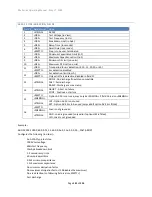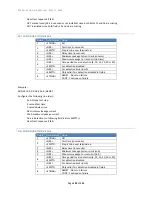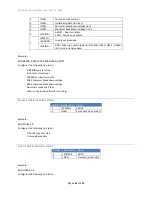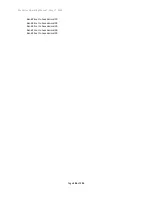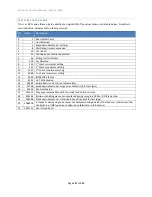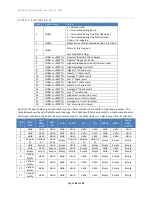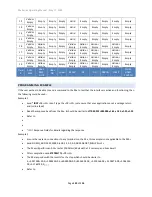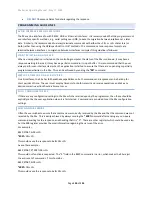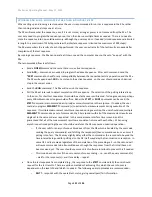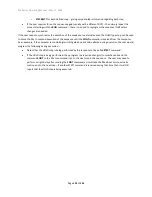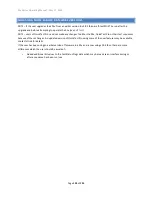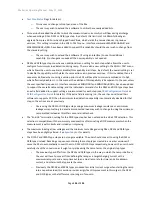
95x Series Operating Manual - May 17, 2022
Page
154
of
155
Flags for details).
o
This causes no change to front panel use of the 95x.
o
The user may wish to extend their software to utilize these newly added bits.
•
This version has added the ability to limit the maximum load current which will flow during discharge
when executing a DCez, DCW or DCIR type step. By default, this limit is set to 200mA following an
upgrade from pre-v2.02 or when shipped from Vitrek, which yields the same actions as in previous
versions. This setting is located in the CNFG - TEST menu. Interface commands MAXDISCHARGE? and
MAXDISCHARGE,<NR3> have been added to support this capability should the user wish to change from
the standard setting.
o
The user may wish to extend their software (if using an interface) to use this additional
capability. No changes are needed if the new capability is not needed.
•
DCW and DCIR type steps now have an additional menu setting for each step which allows the user to
configure for minimum load detection during ramp. There is also a new setting in the CNFG
–
TEST menu
which allows the user to enable (or disable) this capability in all steps. By default, the overall setting is set
to disable the capability, which yields the same actions as in previous versions. If this is enabled then all
sequences defined when running a version prior to v2.02 will have the minimum ramp load set to 0pF,
which effectively disables it. In this manner the addition of this capability is transparent to the user unless
the user specifically requires it. Interface commands MINLOAD? and MINLOAD,<BOOL> have been added
to support the overall enable setting, and the individual commands for the DCW and DCIR type steps have
an extra field added to support setting a minimum load for each step (see
for details). If the extra field is missing (i.e., the user has not altered their
software to support v2.02) then the minimum load detection capability is automatically disabled for that
step, so the actions are as previously.
o
Users using the DCW or DCIR type steps using a maximum leakage resistance or a minimum
leakage current setting to detect a disconnected load may wish to change to using the minimum
ramp method instead as this offers a more reliable check.
•
The “End On” termination setting for the DCIR type step has been extended to add a STDY selection. This
selection is compatible with the commonly used practice of terminating a DCIR measurement when the
measurement is within limits and is steady or improving.
•
The maximum loading at low voltages and the minimum test voltage during DCez, DCW and DCIR type
steps have been slightly altered. See
•
The DCCAP and IRCAP type steps are no longer available. The user should convert to using the DCW or
DCIR types instead. Recalling a sequence containing these step types created in an earlier version will
cause the 95x to automatically convert them to DCW or DCIR steps respectively; however the user should
carefully check the conversion as it might not yield exactly the same test as the original step types.
o
The previous types differ from the DCW and DCIR types in the way in which the ramp is defined,
the user will have to convert from defining the ramp as a target charging current with a
maximum ramp rate and a ramp timeout to an actual ramp rate (or time) and a breakdown
current, and otherwise the types are the same.
o
Previously the DCCAP and IRCAP types produced less initial current surge when starting the ramp
into a capacitive load, this version provides a significant improvement in this surge in the DCW
and DCIR types so that difference is no longer of concern.


